Decades after the fall of the Soviet Union, the annual Victory Day parade in Moscow to honor the defeat of Nazi Germany during the Second World War continues to be a great opportunity to scope out Russia’s latest tanks, mobile ballistic missiles, combat aircraft and aerial weapons, and other large military hardware. Though it looks like it might be better suited to carrying the henchmen in an action movie than actual troops, a small armed snowmobile called the Berkut-2 and its heated cabin may be one of the most interesting participants this year, underscoring the country’s growing militarization of the Arctic Region.
Russian firm NPO Transport builds the small vehicles, which are essentially small car body fitted on top of a snowmobile chassis, in the city of Nizhny Novgorod in Western Russia. The Berkut-2, also known as the TTM-1901-40, the particular variant that took part in the parade, is a refined, militarized version of the original Berkut TTM-1901.
NPO, which also makes a variety of heavier snow-capable vehicles for industrial purposes, such as oil and gas field work, had initially promoted the Berkut mainly on the civilian market. In 2015, the company said it had a contract with the country’s Defense Ministry and the following year it delivered the first batch of 40 Berkut-2 vehicles, which only require a single driver and have an additional seat for a second individual inside the enclosed cabin.
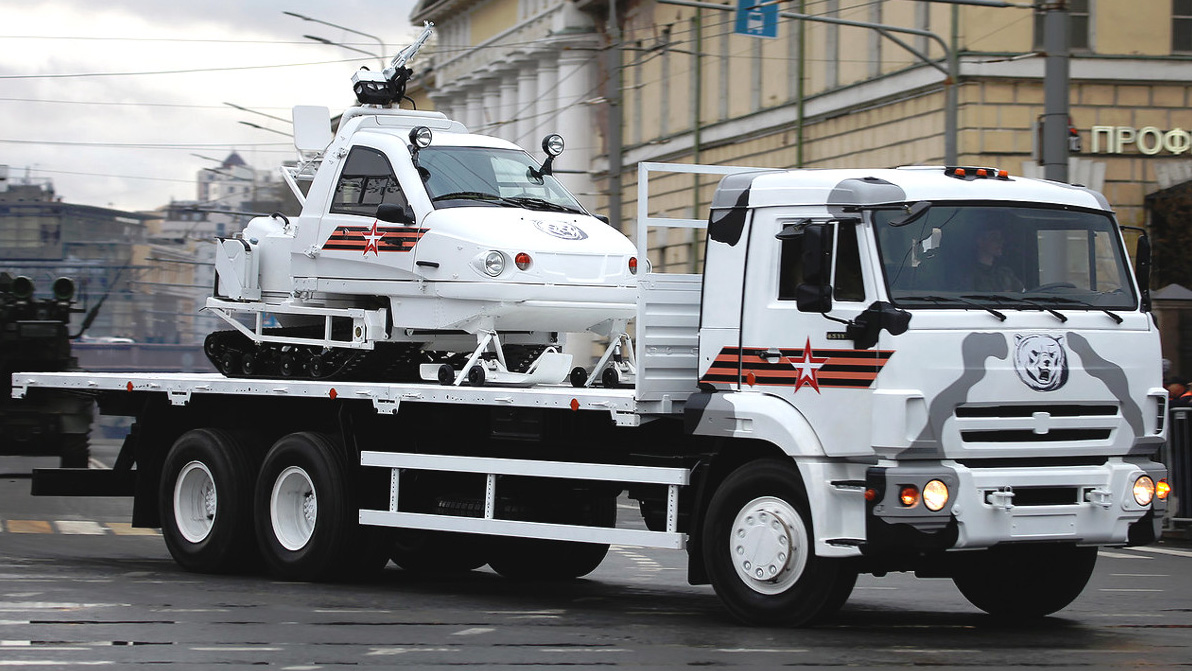
“The regional authorities [in Russia’s Arctic areas] have helped us to develop and make the advanced vehicle,” NPO Transport Director General Nikolai Veselov said in October 2016. “This year, we have been granted a subsidy as a compensation of part of our investment in the development of the production facilities – 3.3 million rubles,” which was equal to approximately $53,000 at that time, he added.
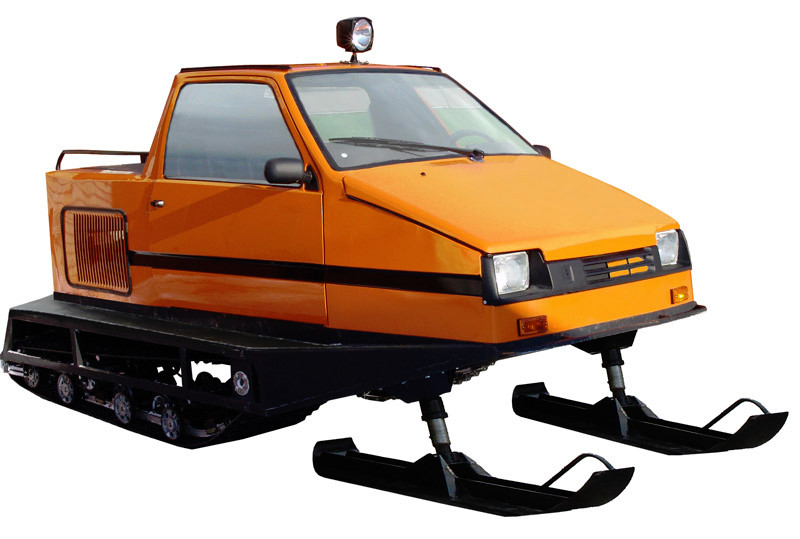
The Berkut and Berkut-2 are both relatively simple vehicles. The original design used body components from old Soviet-era VAZ-1111 Oka compact cars. The Oka subsequently became a Lada-branded product before production ended in 2008.
The Berkut-2 features a much more streamlined looking body that does not appear to have any relation to the Oka. Both the original and the improved design use the same VAZ-21213 80-horsepower engine, which is also found on some models of the popular Lada Niva jeep.
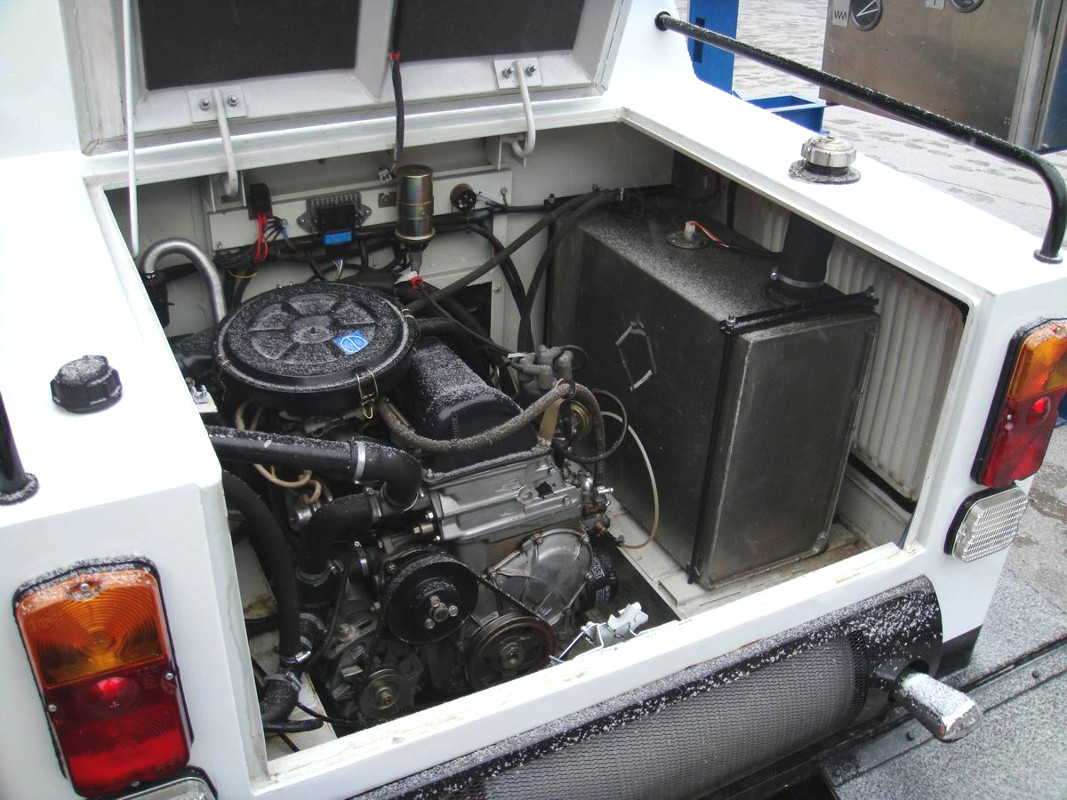
Underneath is a traditional snowmobile design, with a pair of articulating skis up front to steer and tracks at the rear to drive the vehicle. NPO says it can hit a top speed of nearly 40 miles per hour, but it’s not clear what sort of surface conditions it requires to achieve that performance.
The Berkuts can travel an average of 125 miles on a single tank of gas, according to the firm. It’s also small enough to fit on the back of relatively small trucks for more rapid transport to and from snow-covered areas of operation. During the Victory Day parade, civilian-style flatbed cargo trucks carried the snowmobiles.
Many of Russia’s military transport aircraft, such as the Il-76, could easily carry them internally and An-32 or An-76 tactical airlifters may be able to as well. Helicopters such as the Mi-8/17 could carry them sling-loaded or even possibly inside their cabin. This could also make the Berkuts an attractive way to provide additional mobility for airborne or special operations forces inserted in remote Arctic areas for short-duration missions. Russian units already train to conduct parachute jumps above the Arctic Circle.

The vehicles can also tow more than 650 pounds of weight, which could include cargo sleds. Russian Ministry of Defense videos show the vehicles pulling along troops on skis via a tether, as well.
The militarized Berkut-2 also has an external mount for a single machine gun above the driver’s compartment, which would provide some limited local defense. From the examples at the Victory Day parade and those in other official video clips, the vehicle’s the primary mounted weapon appears to be the 7.62mm PKP Pecheneg, the latest iteration of the ubiquitous Soviet-era PK-series of light machine guns. It also has provisions for communications and satellite navigation systems.

But the Berkut’s most significant feature seems to be its heating system. NPO claims that it can keep the occupants at a comfortable 64 degrees Fahrenheit even if the outside temperature dips to nearly negative 60 degrees.
It is almost certainly a welcome change, at least for the drivers, who have otherwise employed more typical snowmobiles, which leave them exposed to the elements, or even dog and caribou-drawn sleighs to get around. The troops traveling in sleds behind or holding on while riding on their skis, or the gunner up above, still don’t get any respite from the weather.
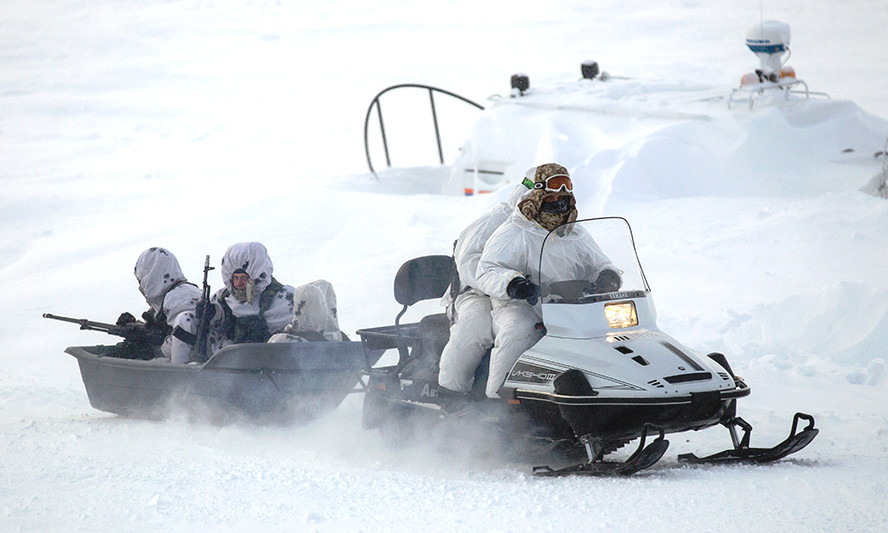
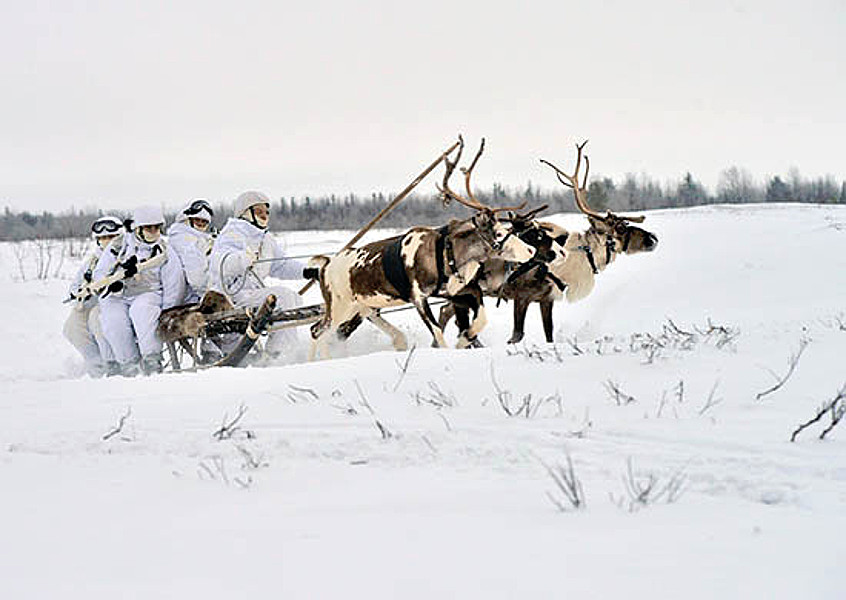
It also makes the Berkuts ideal for patrolling around and otherwise supporting operations in and around the increasingly strategic Arctic region. A significant portion of Northern Russia is already above the Arctic Circle.
And since 2014, under the direction of Russian President Vladimir Putin, the country’s military has been expanding its presence in the region, refurbishing old, abandoned sites and opening entirely new ones. In April 2017, Russian officials unveiled one of the first of these facilities, dubbed the Arctkicheski Trilistnik, translating variously as Arctic Trefoil or Arctic Shamrock.
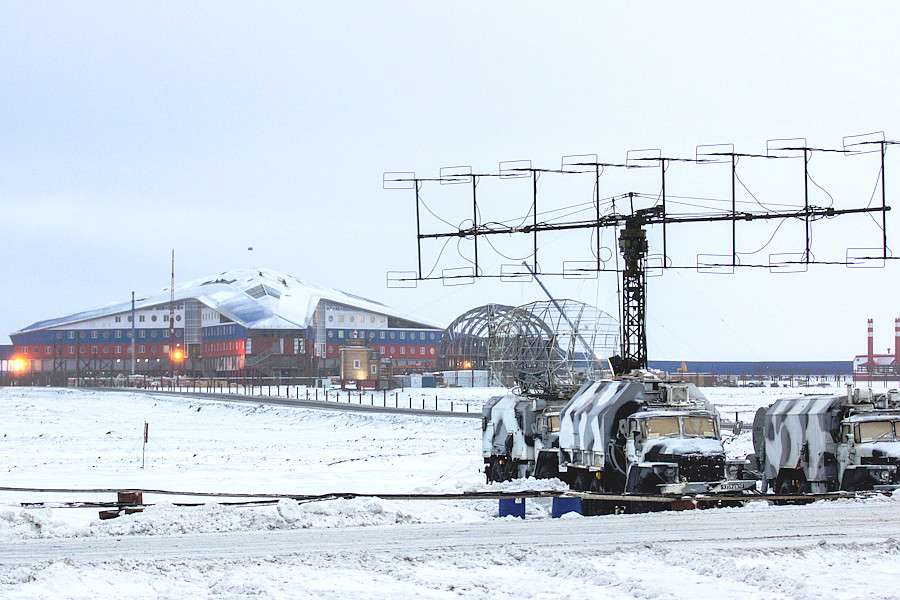
This complex sits on Alexandra Land, an island in the Franz Josef archipelago, and is well north of the Arctic Circle in the Barents Sea. Cut off from the mainland for months at a time, it has various features, including its own powerplant, to remain self-sufficient in the dead of winter. Snowmobiles and other similar vehicles are essential for getting around in the otherwise largely inhospitable area.
Russia’s Arctic troops have also been receiving specialized variants of air defense systems, helicopters, and other equipment handle the extreme weather. Air and naval activity, especially submarine patrols and other underwater developments, have also been particularly pronounced in the region.

Though a relatively mundane addition to these forces, the Berkut will likely a significant amount of regular use, both during training exercises and any potential crisis, as well as just normal day-to-day activities such as patrols. It seems especially well suited to moving personnel and cargo between remote Arctic sites and otherwise monitoring those areas for intruders and other developments. And being simple and cheap to operate and maintain, the Berkuts are a good choice for operations in regions where it might be difficult to quickly get replacement parts and other outside support.
As the Russian military continues to increase its activities in and around the Arctic region it seems safe to assume that we’ll be seeing more of the Berkuts beyond just parades and the occasional promotional video.
Contact the author: jtrevithickpr@gmail.com
